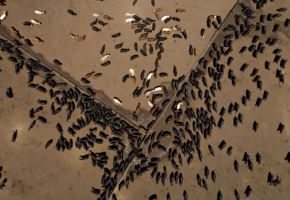Scientists have visualized the elusive Wigner crystal – one of the most important quantum phases

Electrons – these infinitesimally small particles that are known to zip around atoms – continue to amaze scientists despite the more than a century that scientists have studied them. Now, physicists at Princeton University have pushed the boundaries of our understanding of these minute particles by visualizing, for the first time, direct evidence for what is known as the Wigner crystal – a strange kind of matter that is made entirely of electrons.
The finding confirms a 90-year-old theory that electrons can assemble into a crystal-like formation of their own, without the need to coalesce around atoms. The research could help lead to the discovery of new quantum phases of matter when electrons behave collectively.
In the 1930s, Eugene Wigner, a Princeton professor of physics and winner of the 1963 Nobel Prize for his work in quantum symmetry principles, wrote a paper in which he proposed the then-revolutionary idea that interaction among electrons could lead to their spontaneous arrangement into a crystal-like configuration, or lattice, of closely packed electrons. This could only occur, he theorized, because of their mutual repulsion and under conditions of low densities and extremely cold temperatures.
For a long time, however, Wigner’s strange electron crystal remained in the realm of theory. It was not until a series of much later experiments that the concept of an electron crystal transformed from conjecture to reality.
A true Wigner crystal, instead of following the familiar laws of physics in the everyday world, would follow the laws of quantum physics, in which the electrons would act not like individual particles but more like a single wave.
The research team set about to see whether they could directly image the Wigner crystal using a scanning tunneling microscope (STM), a device that relies on a technique called “quantum tunneling” rather than light to view the atomic and subatomic world. They also decided to use graphene, an amazing material that was discovered in the 21st century and has been used in many experiments involving novel quantum phenomena.
The results were impressive. “With our microscope we can confirm that the samples are without any atomic imperfection in the graphene atomic lattice or foreign atoms on its surface over regions with hundreds of thousands of atoms,” the researchers said.
Source: Princeton University News







